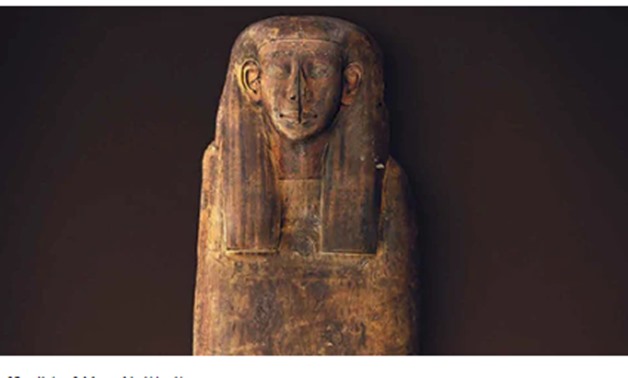
The faded ancient Egyptian sarcophagus - ET
CAIRO - 16 April 2020: In the past, archeologists used very basic tools in their attempts to unveil secrets of ancient Egypt. Now things have changed a lot, and scientists use some of the most advanced technologies to reveal ancient secrets.
James Fraser, chief curator of the Nicholson Museum in Australia, which houses a 2,500-year-old ancient Egyptian sarcophagus, stated that the sarcophagus is beautiful and mysterious, but it lacks the luxurious colors that symbolize the nobles' sarcophagi in ancient Egypt.
Fraser explained that it is possible that the coffins that retain their colors are covered with plaster. It is made from local wood and is considered the cheapest in Egypt, such as sycamore or acacia. He added that plaster keeps the paint better than wood.
The veteran curator further explained that the rich in ancient Egyptwere placed in these wooden coffins of human form. Then, they were placed inside a larger wooden box or stone coffin that is also beautifully decorated.
"The coffins of the rich are often made of imported Lebanese rice where artists were able to draw on it directly. As the centuries passed, the colors faded on the wood. With the loss of colors, what hieroglyphics may have been present?" Fraser asked.
The veteran curator stressed that using modern tools and techniques, we could reveal the colors of the ancient sarcophagus that faded with the passage of time.
For a faded mummy nest, colors that can only be guessed are determined by using a technique called vibratory spectroscopy that uses light to identify materials.
It is possible to examine the strange black lines observed by earlier scientists but never been explained. It turns out that these lines represent wavelengths of light absorbed by impurities in the glass.
Scientists later found that each atom or molecule interacts with light in a unique way for that substance, such as a fingerprint.
The process started with a high-resolution 3D laser scan of the sarcophagus. This allowed the elements of the sarcophagus to be greatly enlarged so that the smallest details can be seen using digital brushes, textures and lighting effects.
Comments
Leave a Comment